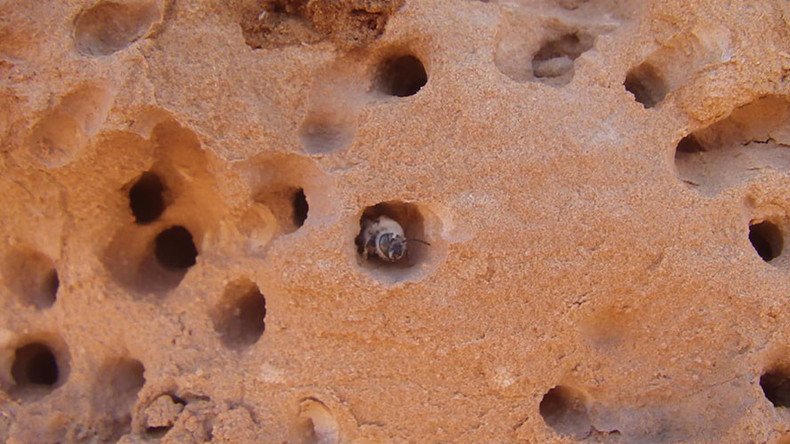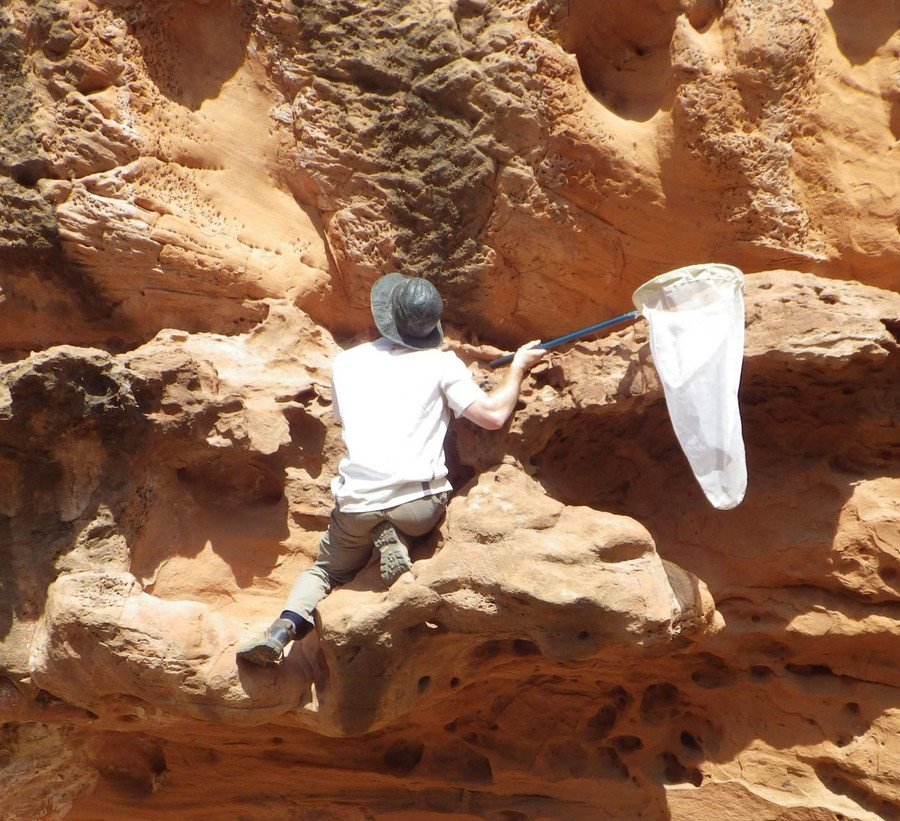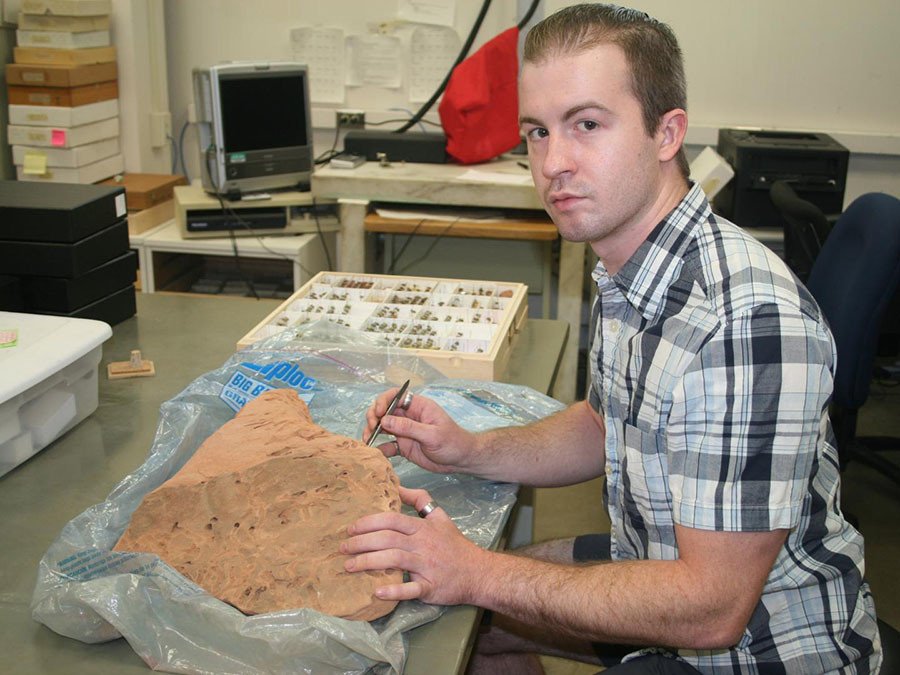New desert bee species builds nests out of solid rock (PHOTOS)

Scientists have discovered a new bee species that has reinforced the creature’s reputation as the hardest working insect by the efforts it makes to construct nests out of hard sandstone in the harsh desert terrains of the US.
Utah State University entomologists have published their study on the Anthophora pueblo bee in the journal Current Biology after examining how the species excavates sandstone nests.
"Not much is known about this hard-to-find species and our first step was to confirm it actually prefers nesting in sandstone," Michael Orr, USU doctoral student in biology and lead author on the paper said in a press statement.
Meet Anthophora pueblo, "A new bee species that excavates sandstone nests." @CurrentBiologyhttps://t.co/bqUYAN70z1
— Michael Orr (@mc_orr) September 12, 2016
The Anthophora pueblo was first discovered by retired USDA-ARS research entomologist Frank Parker almost 40 years ago, when he collected samples of their nests at two sites in Utah's San Rafael Desert. His research was never published, however, nor was the species formally identified.
Orr re-examined Parker’s work a few years ago and discovered five new nesting sites at Colorado's Mesa Verde and natural formations in southern Utah and California's Death Valley.
While these bees are considered uncommon, they are familiar in appearance with their trademark black and yellow stripes.

Orr and his team located the ’worker’ bees nests by targeting sites near water which the insects use to excavate the sandstone.Orr’s team then began their research into why the bees, seemingly, favour such hard labour.
It appears there is method in their madness as the study concluded the benefits of nesting in sandstone outweigh the costs that come with it.
Thanks! But you're going to hurt the bees' feelings, putting weird before awesome like that.... https://t.co/dew2rWBFaN
— Michael Orr (@mc_orr) September 12, 2016
The bees gnaw holes into the rock to build their long lasting homes, which can then be reused by generations of bees.
"Sandstone is more durable than most other nesting options and any bees that do not emerge from these nests in a year are better protected," Orr said.
"Delayed emergence is a bet-hedging strategy for avoiding years with poor floral resources - especially useful in the drought-prone desert."
They also noted the greater protection these elevated rock nests provide against erosion and flash flooding compared with soil nests.
Additionally because the sandstone nests contain less organic matter than soil nests this helps to control parasite build-up across years and may even deter growth of threatening microbes.

However burrowing in stone does take its toll on the desert dwellers, particularly the females and older bees who commonly show wear and tear on their mandibles.
The benefits of the work carried out by the busy bees extend beyond their own species as other insects also nestle into these impressive homes.
“The bee nests also provide a sort of secondary shelter for insects and arachnids that can't chew through rock on their own,” Orr told LiveScience.
About 20 species, including spiders, other bee species and wasps as well as parasites dwell in the solid homestead.












